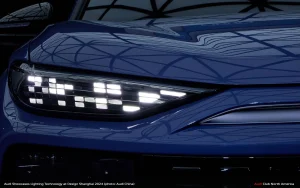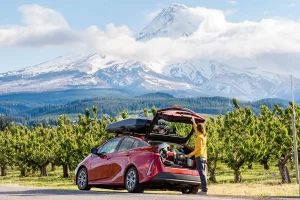The development of self-driving cars is a big deal, and it’s something that can have a profound effect on our lives in many ways. It’s going to change how we move around, and it could even help prevent accidents and other tragedies. But, it’s also likely to make us all nervous as it becomes more and more commonplace. So, let’s examine some of the challenges we’re going to face as we try to make these cars as safe as possible.
Levels of autonomy
Levels of autonomy in self-driving cars can be defined in a number of ways. The Society of Automotive Engineers (SAE) International has created a classification system to help people understand how these vehicles work.
In particular, the SAE report titled Taxonomy and Definitions for Terms Related to On-Road Motor Vehicle Automated Driving Systems identifies six levels of automation.
For the most part, these systems are designed to reduce the number of human errors while driving. This can improve the mobility of elderly people and cut down on the emissions of modern vehicles. Some of the more common features include adaptive cruise control, lane departure alerts, automatic emergency braking and automatic steering.
Sensors
Besides the computer, sensors are the most important part of an advanced driver assistance system. They monitor the surroundings of the car and help the vehicle make a safe and efficient path. Various types of sensors are used for different purposes. Some of them include radar, image, and ultrasonic.
Radar uses radio waves to measure distance and speed. However, it is not a helpful tool when reading stoplights or traffic signs.
Image sensors are important components of self-driving vehicles. These sensors automatically detect objects and measure their distances. Unlike radar, they do not require GPS. In addition, image sensors have the advantage of providing realistic images of the environment.
Radar
The use of radar for the development of self-driving cars has become an important tool in the automotive industry. This technology allows cars to sense their surroundings and avoid collisions with other vehicles.
A growing number of automakers are adding radars to their vehicles to enable self-driving features. However, there are many challenges to achieving this goal. For example, the dense scenes of the automotive environment make it challenging to detect and identify targets.
Adding HD radar to the mix increases the complexity of the data. But the added complexity can be used to improve performance and accuracy.
One solution is to fuse the data from two radar sensors. This can create a new, free of noise image.
LiDAR
LiDAR is a laser that generates an image of the surroundings of a car. It is generally installed on top of a car. Combined with other sensors, it gives a full 3D image of the surroundings.
There are two main types of lidars. Mechanical rotating lidars use a spinning bucket to generate the beam. These have huge restrictions in vertical FOV.
Another type uses MEMS mirrors. They are more compact. This type is simpler than electromechanical lidar, and can be used for vehicles of all sizes.
Unlike mechanical rotating LiDAR, solid-state LiDAR does not require a spinning bucket. This is important to self-driving cars.
Computer vision
Computer vision is a technology that allows autonomous cars to identify objects. This allows the vehicle to detect other vehicles, road signs, and obstacles on the road. In addition, it also helps the car to know what traffic conditions are.
The computer vision of self-driving cars relies on a variety of sensors. Cameras are often used, but they are not the only ones. Other sensors, such as stereo sensors, can collect data as well. These sensors create a three-dimensional map of the surroundings.
Computer Vision uses complex algorithms to identify the objects within these images. They then interpret them and make appropriate actions.
Social interaction
Autonomous vehicles are in the early stages of development. There is a need to develop methods for social interaction with autonomous cars. The methods should be able to assist designers in imagining new social scenarios. In addition, they need to be able to sift through the complexities of future technology.
A workshop was conducted to explore social interactions with an autonomous vehicle. The participants were recruited from a variety of disciplines. These included 18 academic researchers, two master students and two research assistants.
An enactment of a real-life scenario was used to stimulate insights into the design process. Participants were given props that represented a range of users and social situations.






More Stories
What Are The New Innovations in Car Lighting?
Road Trip Essentials – What to Pack for a Long Drive
The Age of Auto Accessories Supporting the Environment